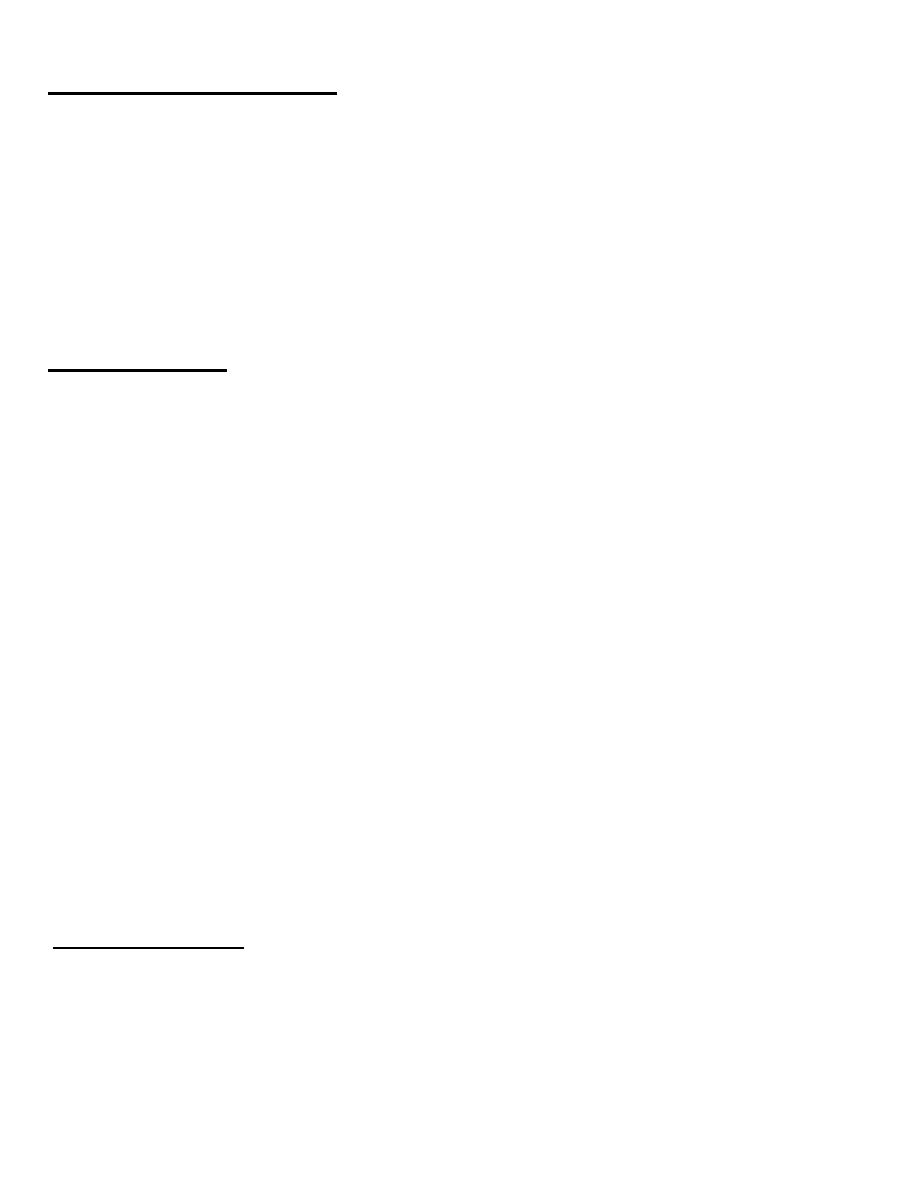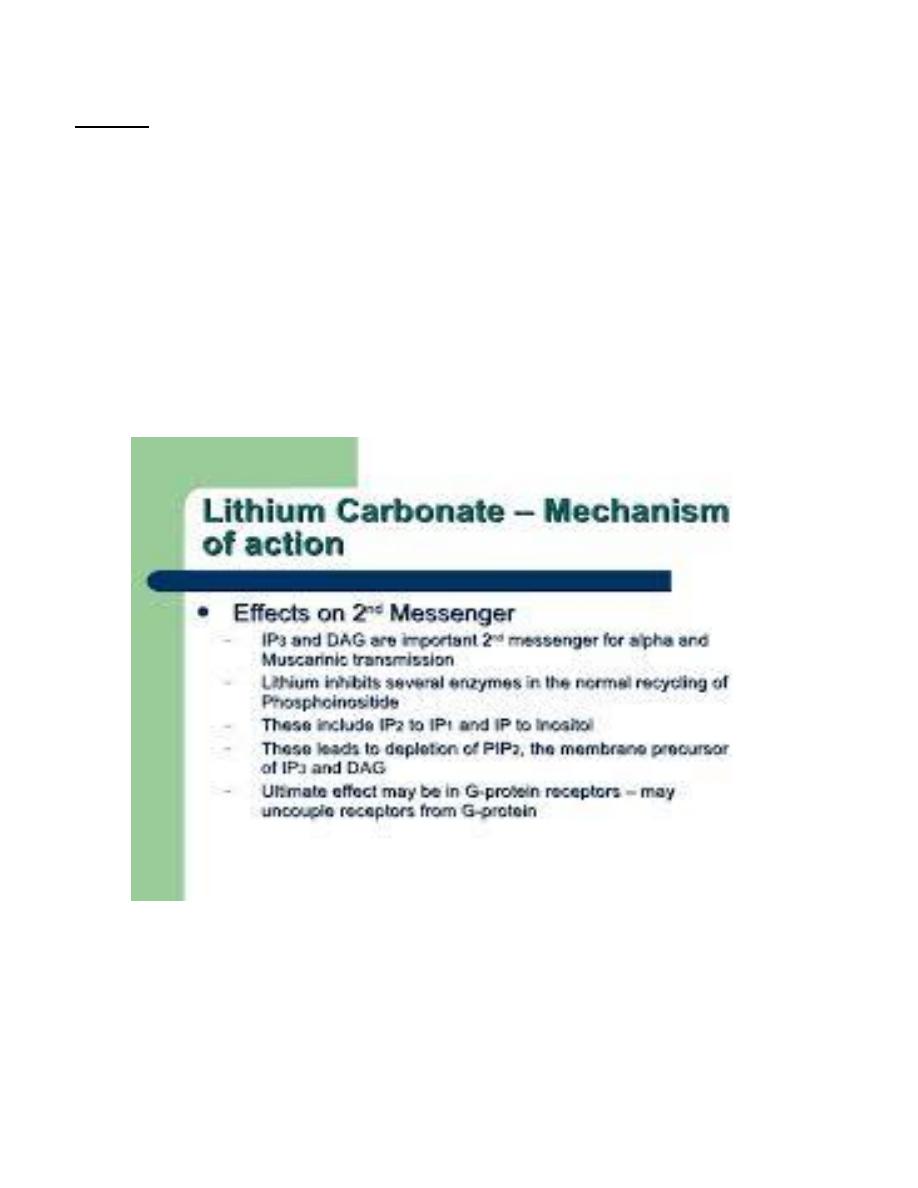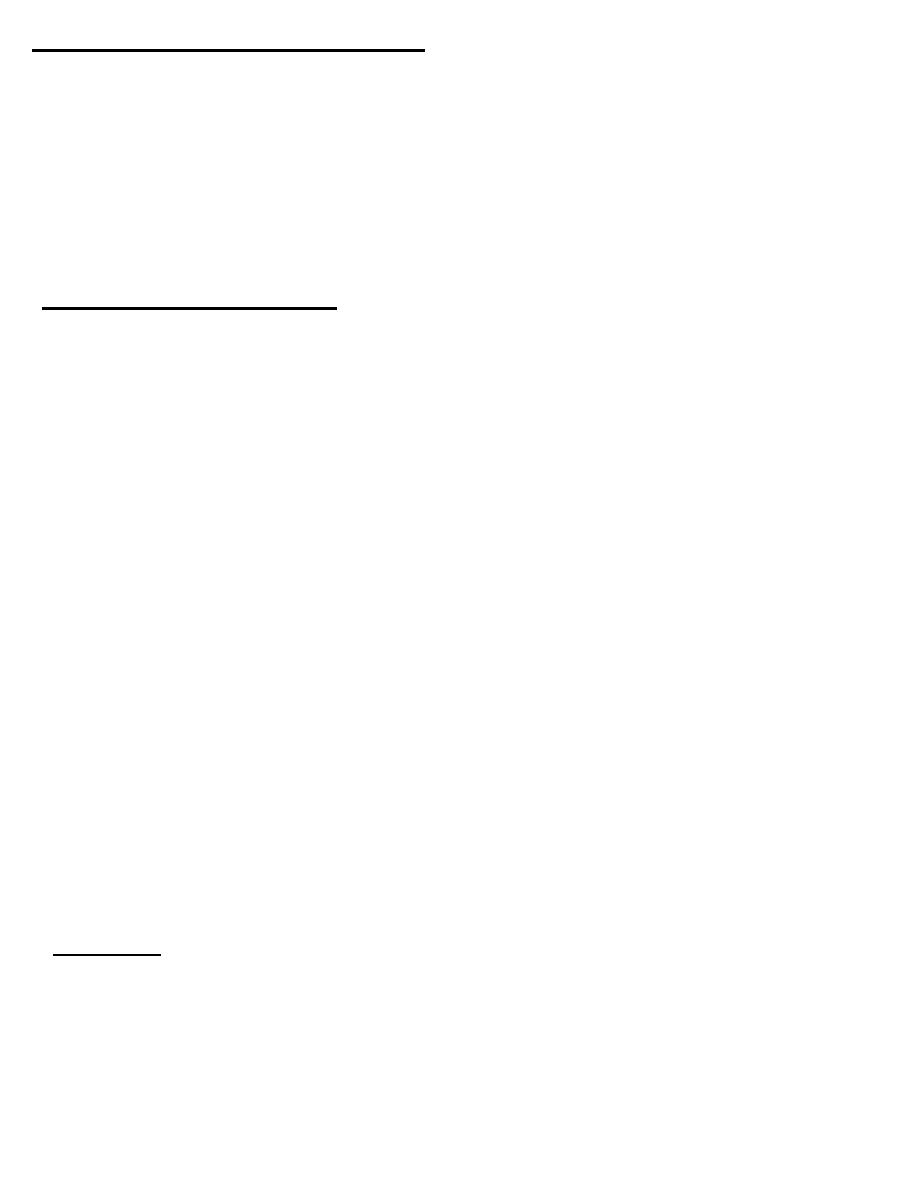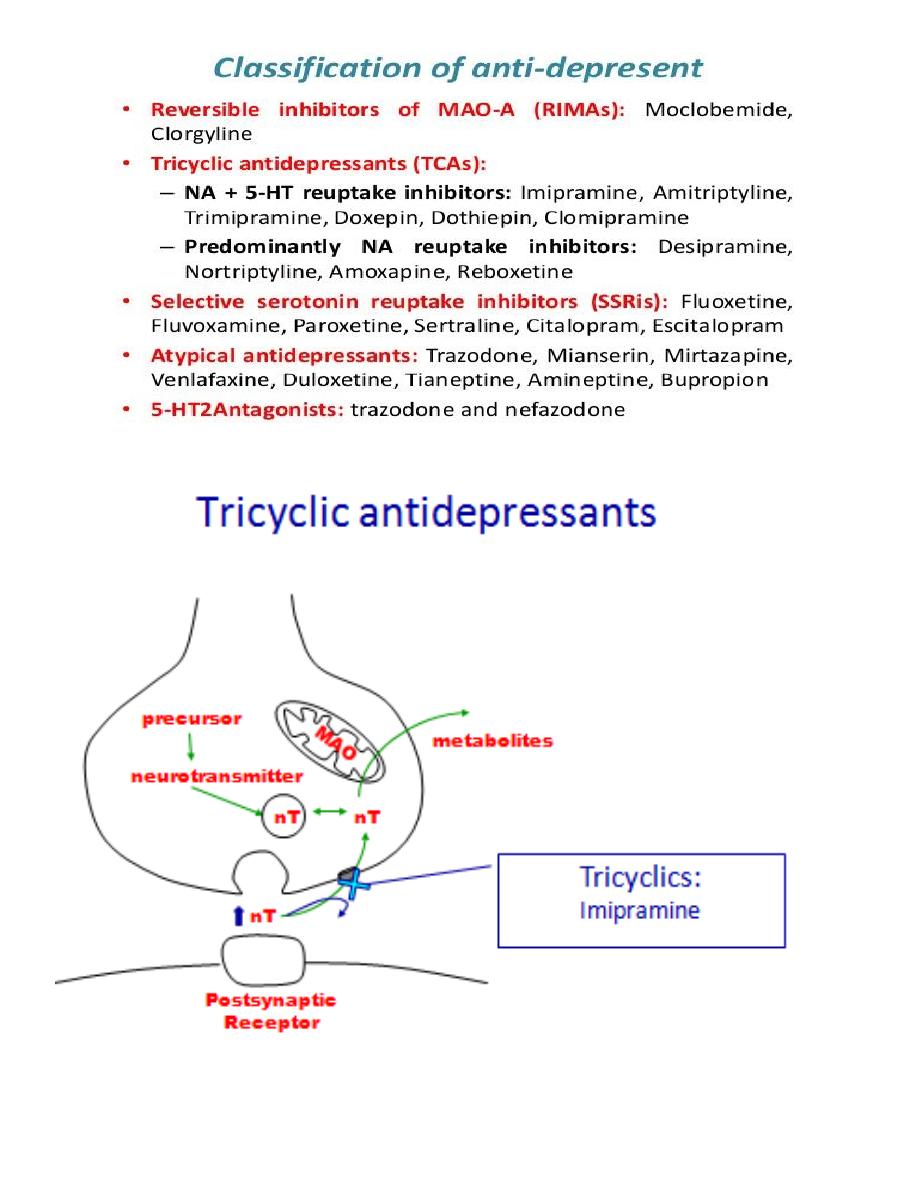
Treatment in psychiatry
د
.
مها
Drug treatment
Non drug treatment –Psychotherapy
Psychosurgery
Electroconvulsive therapy ECT
Drug treatment of psychosis
Psychosis are group of serious psychiatric disorders characterized by thought and perceptual
disorder ,the most important and common type is schizophrenia
Psychosis (short ,temporary,sometimes only symptoms ) can be induced also by drugs like
1. Levodopa
2. CNS stimulants : Cocaine ,Amphetamines
3. Khat
4. Apomorphine
5. Phencyclidine
Dopamine theory of –schizophrenia
Increased activity of Dopamin -the cause behind discovery of anti-psychotic medications
Increased activity of the Dopamenergic system dopamine Correlates:
Anti-psychotics reduce dopamine synaptic activity
they produce parkinson –like symptoms
drugs that reduce DA in the limbic system reduce psychosis

Changes in amount of Homovanillic acid (HVA)in plasma ,urine and CSF
Anti-psychotic treatment
In treatment and prevention of all types of psychosis
Neuroleptics
Schizophrenia must be treated with medications for long times as the disease is life long
They are also used in treatment of associated psychotic symptoms with other psychiatric or
physical disorders like Alzheimers disease ,Bi-polar disorder ,organic diseases, as anti-
emitics,drug addiction
Anti-psychotics
Old anti-psychotics ;Phenothiazines,Thioxanthines,Butyrophenones,Chloroprothioexene,
Haloperidol, Droperidol
Newer drugs: Pimozide ,Molndone ,Loxapine ,Clozapine,Olanzapine,Qetiapine ,Risperidone
olindone
Clinical problems with anti-psychotics includes;
1-failur to control negative effect
2-significant toxicity
3-parkinsone like symptoms
4-Tardive Dyskinesia
5-endocrine effect
6-cardiac effect
7-poor concentration
Mood stabilizers
Bi-polar 1 ,Bipolar 2
Lithium
Valproate
Olanzapine
Anti-convulsants
Carbamazepine
Lamotrgine
Second generation antipsychotics

Clozapine\resperidine
Quetiapine
Lithium
Salt used in treatment of Bi-polar disorder
Very narrow therapeutic window ,1.2
maximum therapeutic plasma level and more than 1.5 ,toxic symptoms starts to occur
Adverse effect of Lithium:
Polydipsia
Hand tremor
Headache
Decreased concentration and memory
Risk of diabetes insipidus and nephrotoxic kidney
Hypothyroidis

Mood stabilizers Anti-convulsants
Valproic acid
Carabmazepine
MOA
Adverse effects: weight gain,hair loss ,sedation
Lithium remains the first choice
Drug combination-anti-psychotics+antionvulsants are still commonly used
Quitepine ,olanzapine are the most commonly used anti-psychotics in treatment of Bi-Polar
Sedatives ,hypnotic drugs
Normal sleep consists of 4 stages based on 3 physiologic measures
,EEG,elctromyogram,electro nystagmogram
Non –rapid eye movement (NREM)sleep ;70%-&75%
Stage 1.2
Stage 3,4 ;slow waves sleep ,sws
Rapid eye movement(REM)sleep
Pharmacological action:
An effective sedatives (anxiolytic)agent should reduce anxiety and exert a calming effect with
little or no effect on motor or mental function
A hypnotic drug should produce drowsiness and encourage the onset and maintenance of a state
of sleep that as far as possible resembles sleep state
Sedatives and hypnotics:
Benzodiazepines: large safety margine doesn’t effect the vital organ when given oraly in
overdaose
Barbiturates ; rarely used as sedative nowadays ,older generation cause CNS depression which
lead to comma and death will follow at overdoses resembling state of general anesthesia
because of respiratory depression and vasomotor depression
Chlordiazepoxide was invented at 1961,dervatives of 1,4 benzodiazepine ,they are basically
similar in their phramacological actions ,though some degree of selectivity has been reported
Sedatives
Difference in pharmacokinetic behaviour are more important than difference in profile of
activity,selectivety with to 2 types of benzodiazepine receptor may account for these difference
Pharmacological effects
reduction of anxiety and aggression; affect the hypocampus and nucleus amygdalae
sleep promotion by sedation;
Latency of sleep onset is decresed
Duration of stage 2 NREM sleep is decresed

Clinical use ,advantage
wide safety margin
little effect on REM sleep
Little hepatic microsomal drug-metabolozing enzymes
slight physiological and psychological dependence and withdrawal syndrome
less adverse effect such as residual drowsiness and incoordination movement
anti-convulsants ;they are highly effective against chemically induced convulsions less against
electrically induced one
Induce GABA-medicated synaptic syst ems and inhibit excitatory transmission
Uses
Muscle relaxation
Act selectively on GABAreceptors by enhancing the response produced by GABA-ergic
neurons
Relax contracted muscle in joint disease
Side effects
temporary amnesia
decrese dosage of anesthesic drugs
Depress respiratory and cardiovascular function
Depression
It is a common psychiatric disorder characterized by low mood most of the day subjectively
and by others
diminshed interest in all ,or most of previous activities
apetite ,wt changes ;loss or incresed
insomnia or hypersommnia
decresed concentration and power of discion
Ideas ,thoughts ,images of death ,sucidal thoughts
no organic explanation



Psychosurgery
It is an old treatment before the invention of modern psychiatric medication
Frontoloboctomy
Selective frontotemporal lboctomy
It affect the cognitive function and personality characters
It was indicated in sever types of OCD and psychosis
